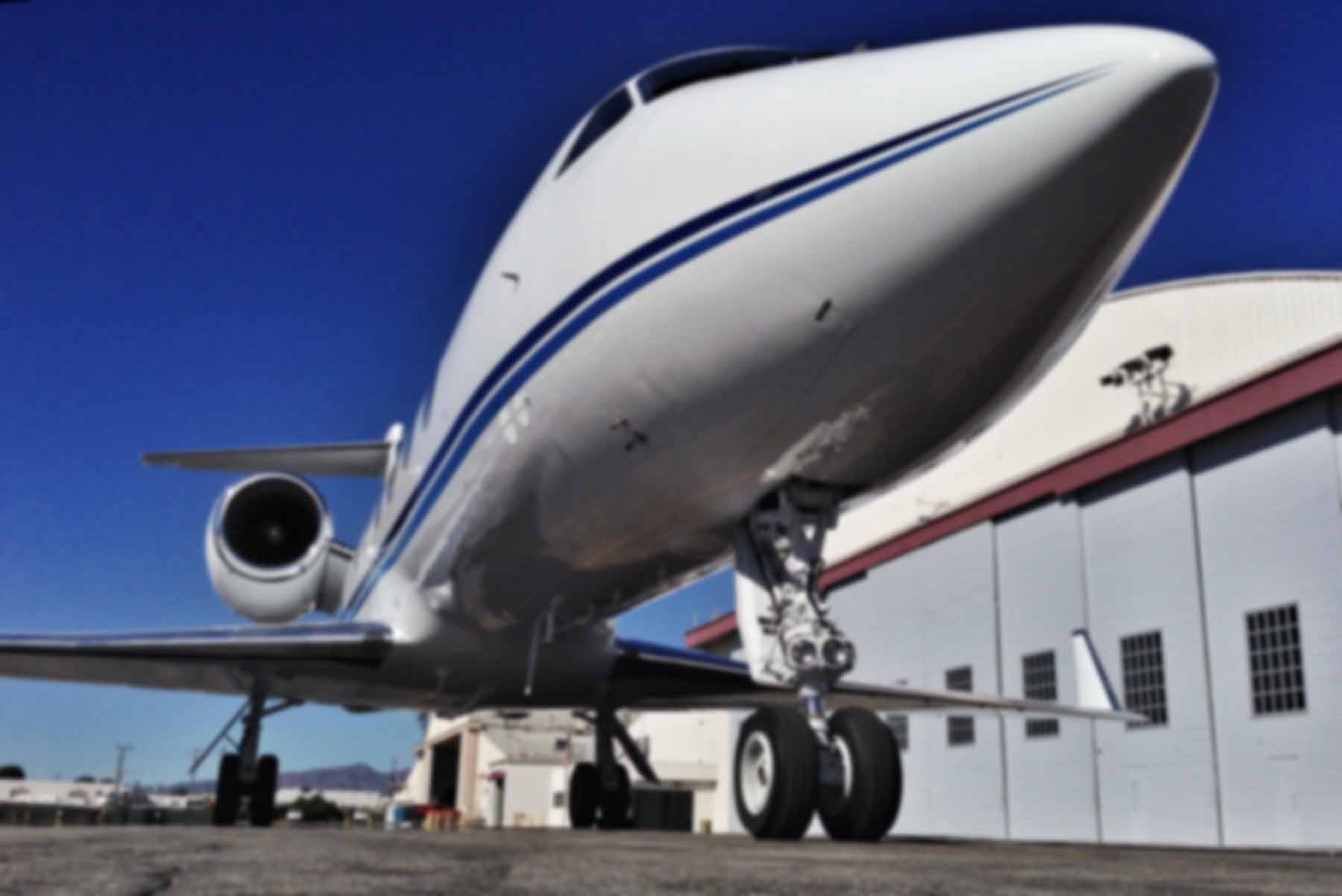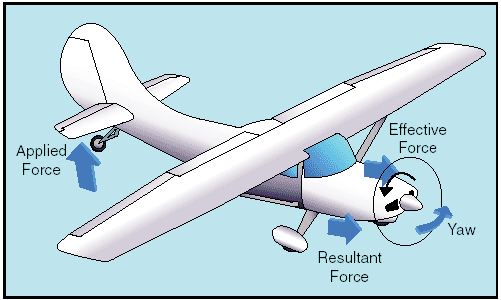Do you fully understand the famous “turning tendencies” which act on propeller-driven aircraft?
It’s one of the first things primary students are taught when flight training commences. And the concepts are not all that complicated. Yet I’ve found that even long-time instructors often lack a proper understanding of at least one of these forces, specifically gyroscopic precession.
Here’s an excerpt from one of Bob Miller’s Over the Airwaves newsletters:
“An unexpected stall, coupled with four powerful left-turning tendencies of a single engine airplane in a steep climb and insufficient right rudder, could easily produce a left hand spin.”
I wrote Bob to tell him that I only count three “left” turning tendencies and ask him to identify the fourth one.
He replied to my question by asking which three I was counting. I said slipstream, torque, and p-factor (propeller factor).
Bob responded by saying I was missing “gyroscopic effect of the spinning propeller. Pull it up, a force will be exerted to the left.”
Really?
Nope. That’s literally 180 degrees off. Rotate a tricycle gear aircraft and the aircraft will yaw to the right. Gyroscopic force is expressed 90 degrees ahead in the plane of rotation. The prop spins right (as seen from the cockpit). That means the force will act as if you pressed on the propeller disc from the LEFT side, and the plane will yaw about the vertical axis to the RIGHT.
In a tailwheel aircraft it MAY be opposite, but the gyroscopic force is dependent upon how the airplane is rotated. Or should I say, whether it is rotated at all. In a Super Decathlon, I allow it to fly off in the three-point attitude. Since I’m not pushing the nose down (or up, for that matter), there is no gyroscopic effect. In the Pitts, on the other hand, I often rotate more to a level flight attitude before leaving the ground, so I get some left yaw.
But gyroscopic effect is not a “left turning tendency”. We (aerobatic pilots) use gyroscopic effect all the time to yaw the plane left, right, up, down, flatten spins, accelerate spins, tumble the airplane end-over-end, and do many other things.
Assuming you’re flying a SE aircraft with clockwise engine rotation, torque always wants to roll the plane left, p-factor always wants to yaw it left (ok, unless you’re flying with zero or negative AOA), and slipstream always goes around the fuselage the same way. But gyroscopic effect does not remain constant. It depends where the force is applied to that propeller disk.
I believe this concept is poorly understood because most pilots don’t generate pitch or yaw rates with enough acceleration to really see the effect of gyroscopic precession. It’s also another example of how the training and knowledge of even experienced pilots are frequently incomplete without the benefit of that flying laboratory we call “aerobatics”.


Aerobatics guy last time i flew a Cheesna 172 it yawed left on rotation 😉
That is because when you increased the angle of attack at rotation, you increased the load on the or “bite” of air on the descending blade and decreased it on the ascending blade, increasing the amount of P factor, not because of gyroscopic precession.
Then the aircraft was less affected by gyroscopic precession than by the other left turning/yawing forces, which is quite typical.
Remember, a smooth rotation will result in less gyroscopic effect than an abrupt one, because you have a lower effective force being applied to the propeller disc over a longer period of time. That’s what I meant in the last paragraph when I said “most pilots don’t generate pitch or yaw rates with enough acceleration to really see the effect of gyroscopic precession.”
Try jerking the airplane off the ground with a small but rapid application of elevator some time. You’ll notice the gyroscopic effect. Heck, you don’t even have to do it on the ground. Try it in cruise while running at high engine RPM, just make sure you’re well below Va.
in a single engined propeller when doing an aileron roll to the right or for that matter roll over the top or Cuban 8, there is often a necessity to give forward pressure, (holding the nose) passed the 90 degree point…what effect would that be? slip stream of gyroscopic effect.
Rahim, I’m not sure what you’re referring to. Slipstream and gyroscopic effect are two different things.
It’s going to be fun deal with this left turning tendancy on my first crow hop… because not only will it be my first time off the ground, but I’ll also be being my own test pilot of my plane at the same time… as I’m making quite a few changes to my motor glider, I’m going to have to calculate and guesstimate that the CG is in the right place relative to the CL… and I’m hoping I get it all close to right, more forward than it needs to be but not so far forward I have to keep a hell of a lot of back stick just to stay level…
Great points made. I found an old video on gyroscopic precession from the 1960 that concisely described gyroscopic precession as the tendency for an object to align the rotation with the force applied. Once I used this definition (instead of the 90 degree lead) it became very intuitive as to how a rotating object would behave in response to a force applied. (vid link: https://www.youtube.com/watch?v=JnKloSdUJLo) at about the 2:40 mark
Old post I know, but reading this post literally it seems that Bob was talking about the forces caused by the gyroscopic precession of the prop disc itself. He said “pulling it up and a force will be exerted to the leftâ€. It seems that your example shows the opposite, where the effective force on the plane of rotation is at the top, which pitches it down. So it is not pulling it up, just the opposite. To pull it up, the force on the prop disc would be at the bottom of the plane of propeller rotation, with the resultant precession force happening 90 degrees later, resulting in a new yaw force to the left, precisely as he said. From a precession perspective, it also works in reverse, so if you yaw the aircraft to the left, the precession force would now be at the bottom of the plane of rotation trying to pitch the prop disc up.
Can you clarify? Because from how I read your description it doesn’t match up. Sitting in pilot seat, pulling up means the force at the top of the prop disc is towards you and the force at the bottom of the prop disc is away from you. 90 degrees later the force on the left side is away from you and the force on the right side is towards you which is a yaw to the left.
It’s difficult to describe without a diagram or model, but you’re right that when you pitch up, the force applied to the prop is as though it’s being applied from the bottom of the propeller disc. Ninety degrees ahead in the plane of rotation is on the left (as seen from the pilot’s perspective). Therefore the resultant movement will be as though the force was applied to the left side of the prop and it till yaw the nose to the right. Remember, the airplane is yawing around the center of gravity.
I had a serious typo. At the very, very end of my last post, what I meant was a yaw to the RIGHT. So I agree with your response Ron. I was responding to Jeff’s assertion of yawing to the LEFT when pulling up which didn’t make sense to me.